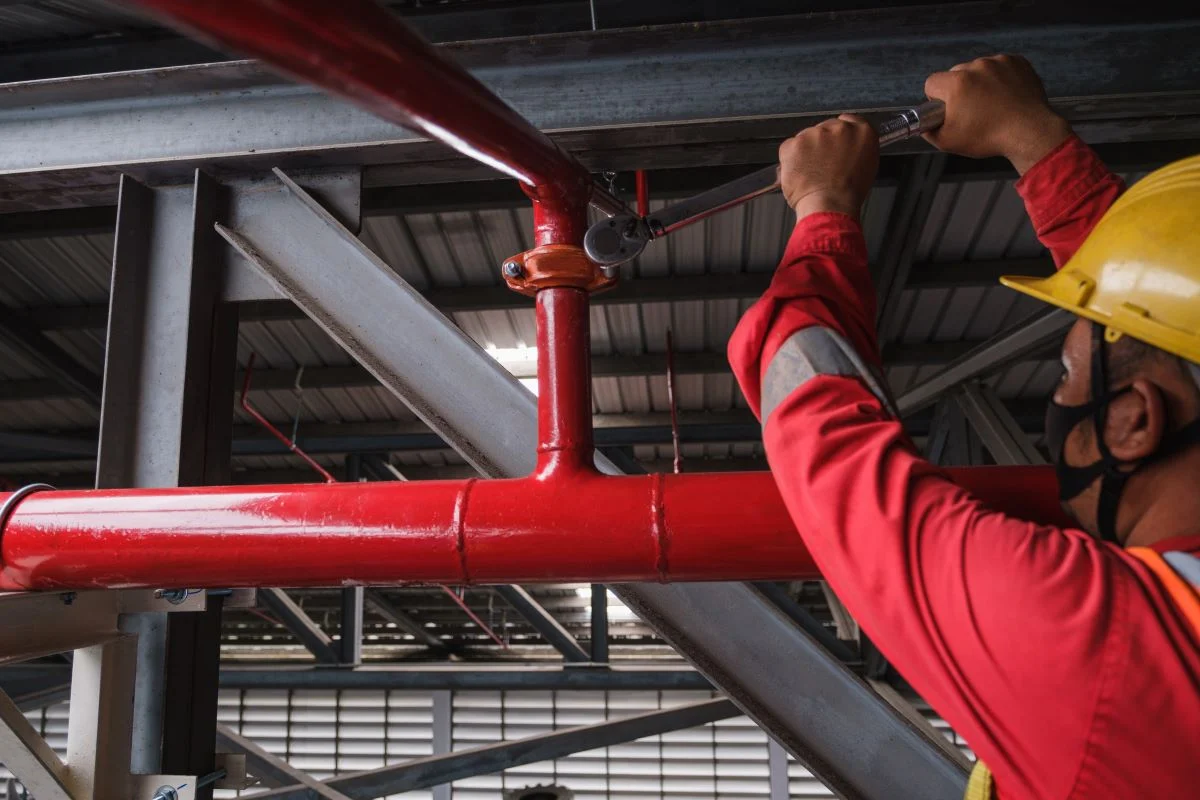Sprinkler systems play a vital role in providing fire protection in buildings of all types, from residential to industrial. Their effectiveness is based on both precise design and technology as well as systematic monitoring. Testing sprinkler systems enables early detection of faults, which minimises the risk of failure in critical situations. In this article, we will examine how often and how tests should be performed, what problems can occur and how to carry out inspections effectively to ensure maximum protection.
How often should sprinkler systems be tested to ensure they are effective?
The frequency of inspections and tests of sprinkler systems is strictly defined in regulations and standards such as EN 12845. Proper care in inspection of fire protection systems requires an integrated approach, including:
- [u]daily observations[/u] – verification of pressure gauges, valve status and other visually accessible elements;
- [u]monthly operational checks[/u] – testing of pumps and alarms;
- [u]annual comprehensive inspections[/u] – including a full mechanical and hydraulic check of the installation.
An example would be a production plant where the pressure in the pipes is monitored daily. A test of the fire pumps is carried out once a month. This allows for the elimination of minor irregularities on an ongoing basis. As a result, the system maintains the highest efficiency at all times.

Most Common Problems Found During Sprinkler System Testing
Regular inspections can reveal deficiencies that could disrupt system operation in an emergency. Problems such as pipe contamination or mechanical damage can result in reduced efficiency. Basic faults include:
- [u]deposits and corrosion in pipes[/u] – accumulation of contaminants in the water system impedes flow, which may prevent efficient operation;
- [u]valve leaks[/u] – leaks cause a loss of pressure, reducing the system’s ability to respond quickly;
- [u]fire pump problems[/u] – lack of maintenance can lead to their improper functioning in emergency situations.
An example of this is a class A office building where deposits were discovered in the system pipes during an annual inspection. Thanks to quick service actions, a costly replacement of the entire installation was avoided.
Step by step – how to carry out effective tests of fire protection installations?
Conducting fire sprinkler inspections requires a methodical approach. Below is an effective flowchart.
1. Preparatory stage
- Analysis of the system’s technical documentation.
- Notification of facility users about planned work.
- Providing adequate equipment and qualified personnel.
2. Verification of individual elements
- Inspection of valves and sprinkler heads for mechanical damage.
- Evaluation of fire pumps and pressure gauges.
3. Functional Testing
- Fire incident simulation with system response time verification.
- Checking the efficiency of water flow through sprinkler heads.
4. Summary and documentation
- Prepare a detailed test report.
- Indication of areas requiring improvement.
Installed sprinkler systems are advanced fire protection tools, the effectiveness of which depends on regular tests and inspections. Sprinkler system tests, supported by systematic inspection of fire protection systems, allow them to be kept in excellent condition. Neglecting these activities can lead to serious threats, which is why it is worth entrusting their implementation to qualified specialists. Regular inspections of fire protection sprinklers and regular sprinkler services are an investment that both protects life and property and increases the value of the property. Choose proven specialists and provide your facility with maximum safety.
